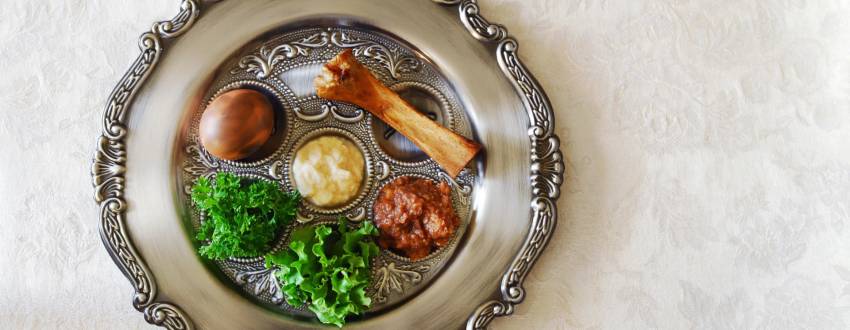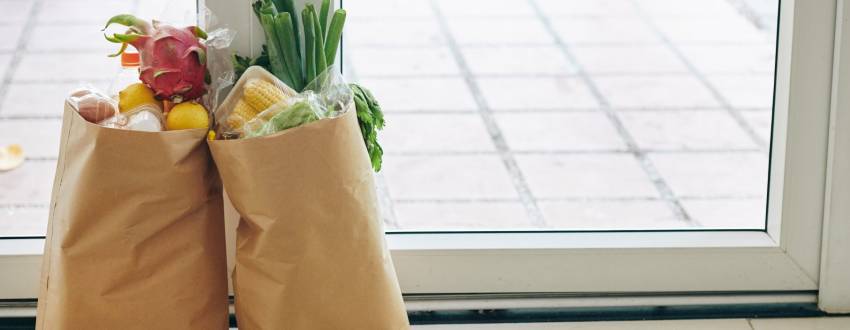“Shelter in place.”
For many of us, that translates into “make Pesach by yourself this year.” Planning. Shopping. Cleaning. Cooking. And, maybe most daunting of all, preparing for the Seder.
We’ve got you covered, though. Here’s a guide to each part of the Seder plate, how to prepare it, and how much you need.
CHAROSET
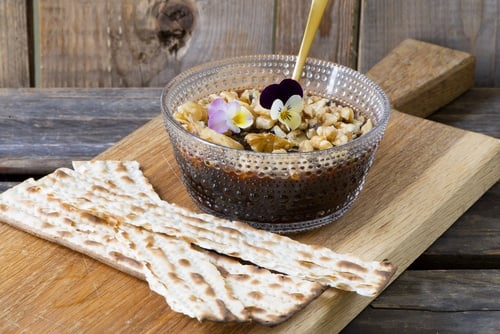
Significance: Charoset is a paste made of fruits, wine, nuts, cinnamon, and other spices. It reminds us of the mortar used to make bricks in Egypt. We dip the maror into the charoset and then shake it off.
How to make it: Charoset varies by country, so first, find out your family custom. (Just another good reason to check in with your mom.)
Ashkenazi charoset typically starts with apples as the base, while Sephardic charoset may have dates and raisins. Either way, you’ll want to use a food processor to chop the fruits and nuts. The flavors of charoset combine and improve with time, so you can make the charoset a few days ahead of Pesach. Store it in an airtight container in your fridge until the Seder.
How much you need: At a minimum, just one or two tablespoons per person to dip the maror into each night. Some families enjoy eating charoset at the meal, so they make more.
MAROR (horseradish root)
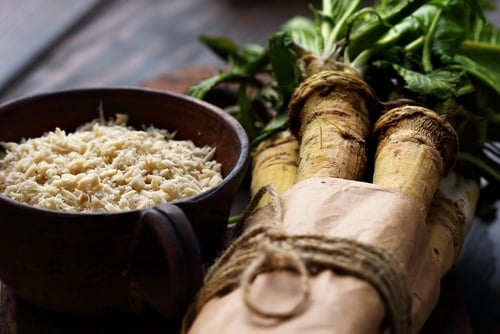
Significance: Bitter herbs that we eat to relive the bitterness of slavery.
How to make it:
A whole horseradish root doesn’t emit strong fumes, but grating horseradish releases the volatile oils (isothiocyanates). The fumes can make your nose run and irritate your eyes, so prepare it in a well-ventilated area or even outside if your eyes are extremely sensitive.
- Peel the horseradish root.
- Cut it into half-inch chunks (bigger pieces may break your food processor.)
- Process in a blender or food processor.
- Pack tightly into a small container and seal well. The more airtight and packed the container is, the more kick the horseradish will have. You may want to pack separate containers for each Seder to keep the second night’s batch strong.
How much you need:
A little bit of horseradish root goes a LONG way. A one-pound horseradish root will get you more than 25 oz of grated maror. Check with your rabbi, but according to most opinions, the halachic requirement for each serving of maror is only about 1 oz.
When you calculate how many servings you need, remember that each person eats two servings of maror per Seder – once during Maror and once during Korech. Also, keep in mind that some people may choose chazeret instead of horseradish (see below).
If you have leftover horseradish, you can try adding a kick to other recipes like Beet Horseradish Salad or a French Roast.
ROASTED EGG
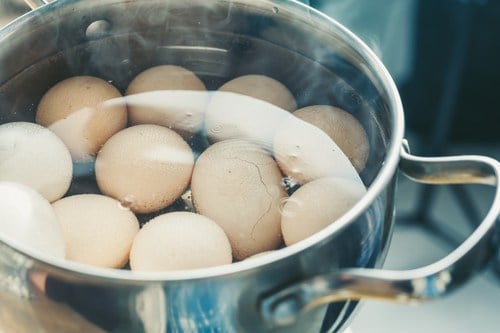
Significance: Reminds us of the holiday offering in the Beit Hamikdash.
How to make it:
Roasting an egg is simple enough if you follow one rule: Hard-boil it first. Raw eggs may explode when roasted. (You really don’t need that kind of mess on erev Pesach.)
Once you hard-boil the egg, you can roast it by:
1. Baking it in the oven at 350 degrees Fahrenheit until the egg develops brown spots and starts to crack
2. Using tongs to hold it OVER a flame on your stovetop
Store the egg in the refrigerator until the Seder.
How much you need: One per Seder plate at your table. You can save the egg from one night to the next unless your custom is to eat the egg during the meal. Even if everyone in your family eats an egg at the Seder, you still only need to roast one for the Seder plate. Everyone else can have the plain, hardboiled variety.
CHAZERET (romaine lettuce)
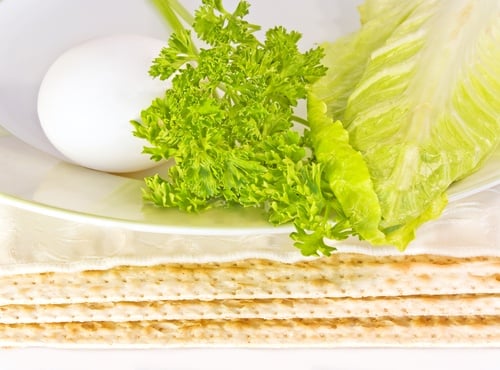
Significance: Another form of bitter herbs used for maror.
How to make it:
Romaine lettuce needs to be checked for bugs. (Click here for the OU Guidelines.) If you don’t have time or ability to check for bugs you could:
1. Buy pre-checked – very convenient, but pricey
2. Strip the leaves and only use the stalks
To keep the chazeret crisp, you’ll want to dry it off thoroughly before you store it. Salad spinners are an efficient option, and the little kids will have lots of fun “helping” you. When you bag the lettuce, poke some air holes in the plastic so the air can circulate. To save time at the Seder, you can even pack the chazeret into portion-sized baggies.
How much you need:
The good news is that if you prepared too much romaine lettuce, you could make it into a salad the next day.
But if you want a ballpark figure, start by counting how many portions you need. Remember that we eat maror twice each Seder and that some people may choose horseradish.
The number of servings per head of lettuce can vary depending on whether you’re using stalks or leaves and on the halachic guidelines you follow. (Check with your rabbi, again!)
So, try it out yourself. Buy a head of lettuce now and measure out portions as you would to prepare for the Seder.
KARPAS
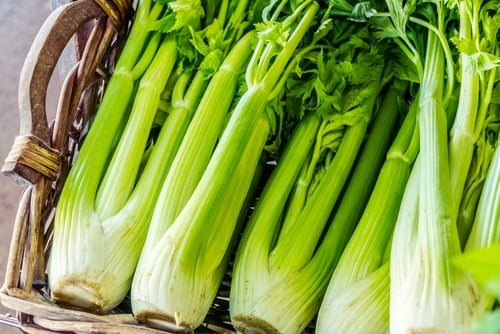
Significance: Karpas is a vegetable such as celery, parsley, or potato, depending on your family’s custom. It’s there to motivate the children to ask questions, especially when we dip it in salt water.
How to make it:
- Parsley – Like the romaine lettuce, parsley needs to be checked for bugs.
- Celery – This one is easy. Just wash and cut.
- Potato – Peel the potatoes and boil until soft, about 15 minutes for smaller potatoes or 20-25 minutes for larger ones.
You’ll want to dry and bag the celery or parsley just like you did for the romaine lettuce.
How much you need:
One piece per person at each Seder, plus a piece for each Seder plate.
Z’ROA (shank bone)
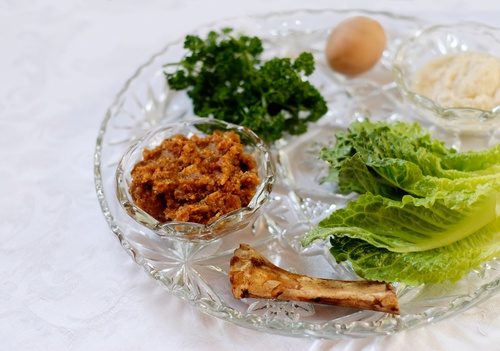
Significance: The z’roa represents the korban Pesach, Passover lamb offering. Most people use a shank bone, wing, or neck, but you can use any part of a kosher animal and bird except the liver.
How to make it:
Ask your favorite butcher for a z’roa. Most kosher meat departments start carrying them a few weeks before Pesach, and you can store it in your freezer.
To prepare the z’roa, rinse it off, and pat it dry. If it’s a chicken wing, you can clean it as you would any piece of chicken. Roast the z’roa by:
1. Roasting it uncovered in the oven at 550 degrees Fahrenheit until the meat turns dark brown
2. Using tongs to hold it OVER a flame on your stovetop
Once it’s cooked, you can store it in a foil pan in the fridge.
How much you need:
One per Seder plate. You can save it from one night to the next since it doesn’t get eaten.
There you have it: Seder Prep 101. Even though there are a lot of parts, most are very quick to prepare. The most time-consuming job is checking the lettuce for bugs, so plan ahead for that.
Erev Pesach is known as the busiest day of the year for a good reason. But the exhilarating feeling of sitting down to a Seder that you prepared will make it all worthwhile.


